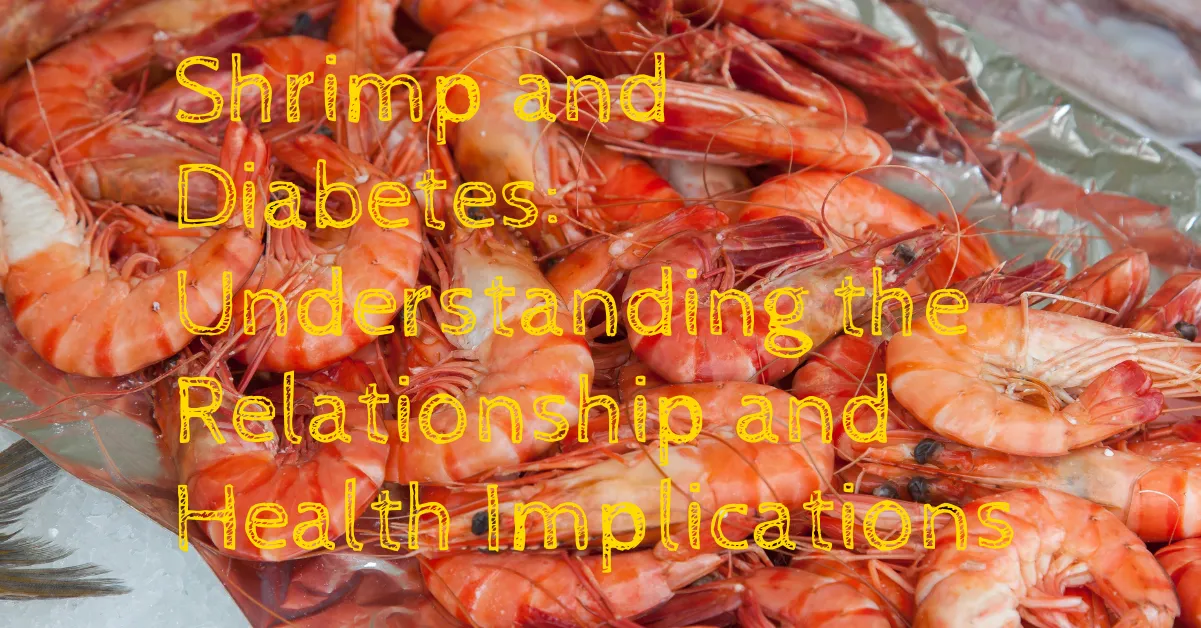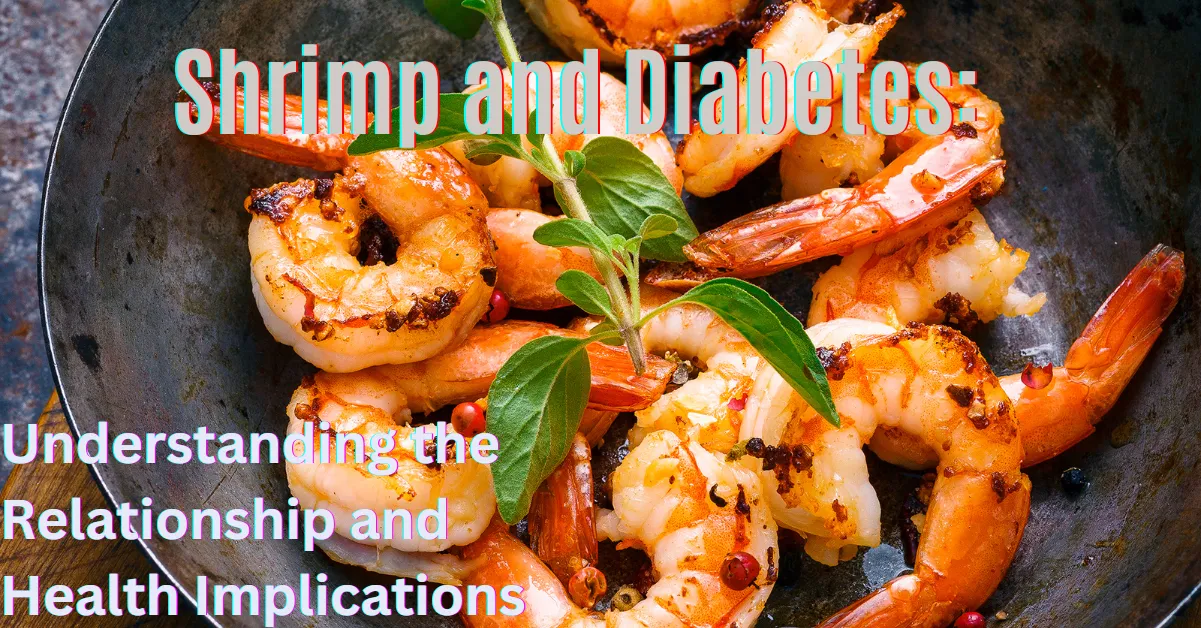Last updated on September 21st, 2025 at 09:25 am
Shrimp Meals: A Diabetic’s Delight: A Tasty Path to Better Health. The Connection Between Shrimp and Diabetes: What You Need to Know: Shrimp is a popular seafood choice that can be included in a diabetic diet. It’s low in carbs, which is suitable for managing blood sugar levels. Plus, it’s delicious and versatile.
- Shrimp Meals: A Flavorful Way to Manage Diabetes
- 9 Q&A Shrimp And Blood Sugar Management
- Source & Credits:
Shrimp Meals: A Flavorful Way to Manage Diabetes
Shrimp is a nutritionally valuable food, especially for those with diabetes. It’s rich in high-quality protein, vital to muscle health and overall body function. A 3-ounce (85-gram) serving of cooked shrimp provides approximately 18 grams of protein. Protein is essential for repairing and building tissues. It can help you feel full and satisfied after a meal, which is beneficial for managing portion sizes and weight, a critical aspect of diabetes management.
Moreover, shrimp is impressively low in fat, with less than 1 gram of total fat in a 3-ounce serving. This is advantageous for individuals with diabetes as it reduces the overall calorie content of the meal and doesn’t contribute to unhealthy weight gain. Shrimp is also virtually carbohydrate-free, with less than 1 gram of carbohydrates per serving, making it an excellent choice for controlling blood sugar levels.
Exploring the Impact of Shrimp Consumption on Blood Sugar Levels
Shrimp are among the seafood options, and they have a shallow glycemic index (GI). The glycemic index measures how quickly carbohydrates in a food item raise blood sugar levels. Since shrimp is almost carbohydrate-free, it has minimal to no effect on blood sugar levels. This is fantastic news for individuals with diabetes, as it means you can enjoy shrimp without worrying about significant spikes in glucose levels.
Shrimp Glycemic Index:
The glycemic index (GI) of shrimp is 0.
Why is Shrimp’s GI 0?
- Shrimp contains virtually no carbohydrates.
- Since the GI is based on the effect of carbohydrates on blood sugar, foods without carbohydrates have a GI of 0.
Shrimp’s low carbohydrate and high protein content can help stabilize blood sugar levels after meals. Protein-rich foods like shrimp can also slow down the absorption of any carbohydrates you eat with them, further contributing to blood sugar control.
Tips for Incorporating Shrimp into a Diabetes-Friendly Diet
Incorporating shrimp into a diabetic diet offers several advantages:
- Blood Sugar Management: Shrimp doesn’t lead to rapid blood sugar spikes due to its low carbohydrate content, making it an excellent choice for stabilizing glucose levels.
- Weight Management: Shrimp’s high protein content can help control appetite and reduce the chances of overeating, which is crucial for managing weight, an essential aspect of diabetes care.
- Nutrient Density: Shrimp provides essential vitamins and minerals like vitamin B12, iodine, and selenium. These nutrients support overall health and can fill gaps in the diet, especially for those with dietary restrictions.
Shrimp is an exceptional addition to a diabetic diet due to its low carbohydrate content, minimal impact on blood sugar levels, high-quality protein, and nutrient density. Shrimp can contribute to better blood sugar control and overall health when part of a well-balanced meal plan. However, as with any dietary choices, portion control and preparation methods are essential considerations.
Dive into Health: The Benefits of Shrimp Meals for Diabetics:
- Watch for Allergies: Some people are allergic to shellfish, so be aware of any allergies.
- Be Mindful of Preparation: Avoid frying or breading shrimp, which can add extra carbs and unhealthy fats.
Shrimp Meals: where succulent meets satisfying. Is it Safe to Include in Your Meal Plan?- Recommended Portion Sizes and Frequency: A 3-ounce (85-gram) serving of cooked shrimp is a good portion size for a meal. You can enjoy shrimp a few times a week as part of a balanced diet.
Shrimp Meals: A Sustainable and Delicious Choice for Diabetics
A Low-Carb Protein Option for Managing Diabetes. Diabetics can include shrimp as a protein source in their diet, and it can be an excellent choice for several reasons
| Health Benefit / Consideration | Description |
|---|---|
| Low in Carbohydrates | Shrimp contains less than 1g of carbohydrates per 3-ounce (85g) serving, making it ideal for diabetic meal plans with minimal blood sugar impact. |
| High-Quality Protein | Each 3-ounce portion of shrimp provides about 18g of lean protein, supporting muscle maintenance, satiety, and blood sugar control. |
| Low in Saturated Fat | Shrimp is low in total and saturated fats, making it a heart-healthy protein. This is essential for diabetics who face increased cardiovascular risk. |
| Nutrient-Dense Seafood | Shrimp provides key vitamins and minerals like vitamin B12, selenium, and iodine, supporting immune health, thyroid function, and energy metabolism. |
| Low Glycemic Index (GI) | With virtually no carbs, shrimp has a very low GI, meaning it won't trigger sudden spikes in blood sugar levels — ideal for diabetic diets. |
| Portion Control Matters | While healthy, overconsumption of shrimp can increase caloric intake. Always balance shrimp with vegetables, whole grains, and healthy fats. |
| Healthy Cooking Methods | Choose grilled, boiled, or steamed shrimp. Avoid fried or breaded versions to prevent unnecessary fat, sodium, and calorie intake. |
| Part of a Balanced Diet | Combine shrimp with fiber-rich vegetables, whole grains, and low-GI foods to create balanced, blood sugar-friendly meals. |
| Individual Dietary Needs | Everyone with diabetes reacts differently to foods. Monitor blood sugar responses and consult a healthcare provider for personalized advice. |
| Sustainable and Delicious | Shrimp is a sustainable seafood option and provides both taste and nutrition, supporting long-term dietary goals for diabetic individuals. |
Shrimp Meals: Delight in every delicious detail: Debunking the Myths and Unveiling the Facts
Feast on freshness with every Shrimp Meals – How can I prepare shrimp meals to fit a diabetic diet?
- Try grilling, baking, or steaming shrimp for a healthier preparation.
- Use herbs and spices instead of heavy sauces for flavor.
- Pair with non-starchy vegetables: Serve shrimp with broccoli, asparagus, or zucchini.
- Choose a complex carbohydrate: Pair your shrimp with brown rice or quinoa for sustained energy.
Other Seafood Options: If you’re not a fan of shrimp, other seafood like salmon, tuna, or cod can also be excellent for a diabetic diet. They’re high in protein and low in carbs.
Shrimp and Diabetes: Exploring the Connection and Benefits – General Tips for a Balanced Diabetic Diet:
- Focus on whole, unprocessed foods.
- Control portion sizes.
- Include plenty of non-starchy vegetables.
- Limit sugary and highly processed foods.
- Monitor your blood sugar levels regularly.
Remember, working with a registered dietitian or healthcare provider is always a good idea to create a personalized meal plan that suits your specific needs and helps you manage diabetes effectively.
9 Q&A Shrimp And Blood Sugar Management
No, shrimp itself is low in carbohydrates, which means it has minimal impact on blood sugar levels. It’s a good source of protein, which can help stabilize blood sugar when included as part of a balanced meal.
Yes, people with diabetes can safely include shrimp in their diet. Shrimp is high in protein and low in fat, making it a suitable choice for managing blood
Shrimp should be prepared using methods that do not add excessive carbohydrates or unhealthy fats. Grilling, broiling, steaming, or sautéing with minimal oil are healthy preparation methods. Avoid breading or frying, which can add carbs and fats that may impact blood sugar levels.
A healthy serving size is about 3 to 4 ounces (85 to 113 grams) of cooked shrimp. This serving size provides a good amount of protein without contributing to excessive calorie intake.
Yes, shrimp contains omega-3 fatty acids, which have been shown to improve insulin sensitivity and reduce inflammation. This can be beneficial for blood sugar control and overall metabolic health.
While shrimp is higher in dietary cholesterol than many other types of seafood, recent studies suggest that dietary cholesterol has a minimal impact on blood cholesterol levels for most people. However, individuals with diabetes should consult with a healthcare provider to tailor dietary recommendations to their specific health needs.
Shrimp can be included as part of a balanced diet, but moderation is key. It’s recommended to have seafood, including shrimp, 2-3 times per week. This allows for nutritional variety and helps manage overall dietary fat and protein intake.
Shrimp and other shellfish do not contain carbohydrates, which means they have a glycemic index of 0. Therefore, consuming shrimp does not directly affect blood sugar levels. For people with diabetes, incorporating low-GI foods like shrimp into their diet can be a good strategy for managing blood sugar levels. However, it’s important to consider how shrimp is prepared and what it’s served with, as sauces or breading can add carbohydrates, potentially affecting its overall glycemic impact.
Yes, you can eat shrimp with the shell on. The shell adds calcium and other minerals to your meal. However, some people prefer to peel the shrimp before eating.
Shellfish allergies are common. If you have a shellfish allergy, avoid shrimp and other shellfish.











August 28, 2024 at 6:03 am[…] Tuna fish (3 ounces water-packed): 154 IU […]